Mary Lowndes
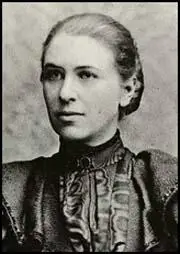
Mary Lowndes, the eldest in the family of four sons and four daughters of Richard Lowndes (1821–1898) and Annie Harriet Kaye Loendes (1827–1907) was born on 30th December 1856. Her father was vicar of St Mary's Church, Sturminster Newton, Dorset. According to her biographer, Nancy Armstrong, "when she was nine a large east window produced in the factory of John Hardman of Birmingham, depicting Christ in Majesty and surrounded by the Acts of Mercy, was erected in the church, and appears to have inspired Mary's future vocation." (1)
It was not until 1883 when Mary Lowndes left for London and entered the Slade School of Fine Art. In 1885 she made her first stained-glass piece, a small memorial to her grandmother that was installed in Sturminster Newton church. During this period she also exhibited at the Royal Society of British Artists, the Society of Women Artists, Manchester City Art Gallery and the Walker Art Gallery. (2)
Her first commissions were made in collaboration with the firm of Britten and Gilson, in whose premises in Southwark Street she took a glass painting studio. Her work was much influenced by the designs and craftsmanship of another studio holder, Christopher Whall, who became the leading stained-glass artist of the arts and crafts movement. In 1897 she formed a business partnership with Alfred J. Drury, head glazier at Britten and Gilson, and set up the firm of Lowndes and Drury to provide facilities and permanent staff including cutters, glaziers, and kiln-men, to enable stained-glass artists to participate in the whole process of carrying out a design. (3)
Mary Lowndes was a great supporter of women's suffrage. In 1899 she attended the International Congress of Women and she helped establish the Women's Guild of Arts. Lowndes was also a member of the London Society Women's Suffrage and the Nation Union of Women's Suffrage Societies (NUWSS). She designed some of the banners used by the NUWSS during the demonstration of 21st June 1908. (4)
In January 1909 Lowndes established the Artists' Suffrage League, to help with the preparations for the first large-scale public demonstration by the National Union of Suffrage Societies. Lowndes became the first chair of the organisation. Other members included Dora Meeson Coates, Emily Harding Andrews, Caroline Watts, Emily Ford, Bertha Newcombe and Clara Billing. It later issued a statement saying that the organisation wanted "to further the cause of Women's Enfranchisement by the work and professional help of artists... by bringing in an attractive manner before the public eye the long-continued demand for the vote." (5)
Mary Lownes designed many of the banners used by the NUWSS including those for the Women's Pageant of Trades and Professions held in 1909 at the Albert Hall as part of the International Woman Suffrage Alliance Congress. Many of her banner designs are in an album, together with her treatise On Banners and Banner-Making. (6) she pointed out: "A banner is not a placard... a banner is a thing to float in the wind, to flicker in the breeze, to flirt its colours for your pleasure, to half show and half conceal a device you long to unravel: you do not want to read it, you want to worship it." (7)
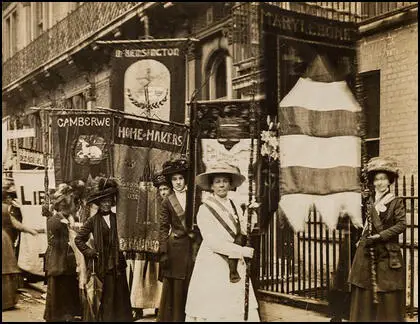
Philippa Strachey explained in a letter to Millicent Garrett Fawcett about the importance of Lownes to the NUWSS. "On the Committee she was most helpful about everything and was delightful to work with because she was entirely free from any sort of nonsense; she only cared about the success of the procession as a whole and was perfectly willing to subordinate her decorations and give up all her cherished ideas when difficulties cropped up. She really did an immense amount of work for us and I shudder to think of what has happened to her own trade meantime." (8)
Mary Lowndes worked with Cicely Hamilton and Dora Meeson Coates and contributed powerful line drawings to the Artists' Suffrage League publications Beware! A Warning to Suffragists (1909) and A.B.C. of Politics for Women Politicians (1910). During this period she contributed articles and art work for The Common Cause and The Englishwoman. (9)
In 1909 Mary Lownes helped organise the Artists' Suffrage League (ASL) and the National Union of Suffrage Societies (NUWSS) poster competition. Philippa Strachey, was secretary of the London Society for Women's Suffrage. Her cousin was the artist Duncan Grant who she encouraged him to enter the competition. Grant's Handicapped! shared the first prize of £5. (10)
In April 1914, Mary Lowndes, wrote in The Common Cause about women artists. "It is commonplace of observation that the artist needs freedom for his development, and instructively adopts a life untrammelled by convention. Women are not free – they have never been free. When the winds of a new inspiration swept across European countries, or blew from Olympia through Greece, or stirred to high ideals the Taoists of China, they shook indeed the purdah curtain of humanity, behind which from age to age, woman everywhere has performed her menial tasks, or taken her dull ease, but they did not blow them wide. If the age of woman has dawned – and it has dawned – it is not to take a stand beside the great creative artists of the world that the prisoners of freedom cast aside their chains and step forth at last from their long seclusion – it is to lend a world-wide revolt against the prejudice and ancient tyranny that, in the teeth of nature and development, struggle ever to keep women the inferior creature they proclaim her." (11)
After the First World War Lowndes and Alfred J. Drury produced many war memorial windows. Mary Lowndes never married and following her death on 28 February 1929 at her home, 27 Trafalgar Square, London, she left most of her estate to her friend and companion Barbara Forbes. (12)
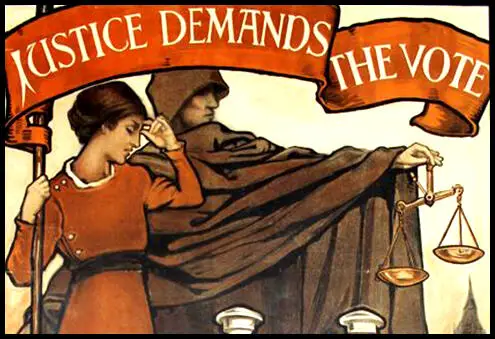
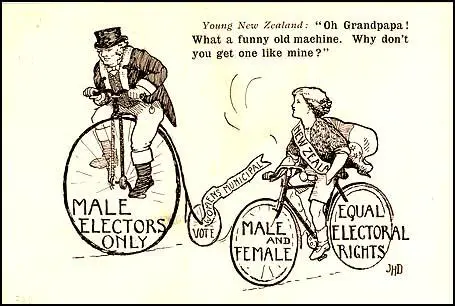
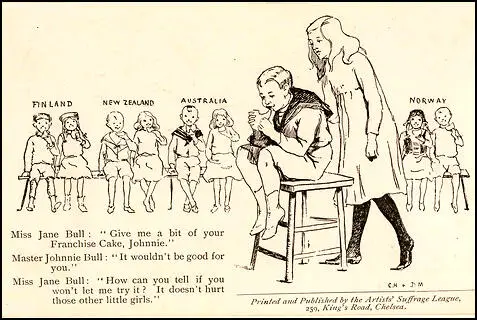
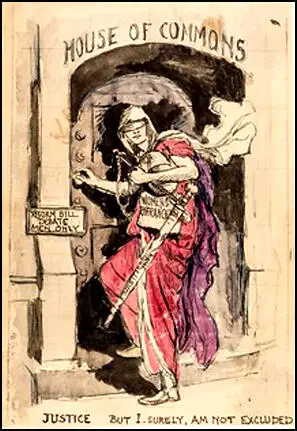
Primary Sources
(1) Philippa Strachey, letter to Millicent Garrett Fawcett (22nd June, 1908)
She (Mary Lowndes) got the banners made and worked out every detail in connection with them without letting us have the smallest trouble about them from first to last. On the Committee she was most helpful about everything and was delightful to work with because she was entirely free from any sort of nonsense; she only cared about the success of the procession as a whole and was perfectly willing to subordinate her decorations and give up all her cherished ideas when difficulties cropped up. She really did an immense amount of work for us and I shudder to think of what has happened to her own trade meantime.
(2) Mary Lowndes, On Banners and Banner-Making (1909)
A banner is not a placard... a banner is a thing to float in the wind, to flicker in the breeze, to flirt its colours for your pleasure, to half show and half conceal a device you long to unravel: you do not want to read it, you want to worship it.
(3) Mary Lowndes, The Common Cause (17th April 1914)
It is commonplace of observation that the artist needs freedom for his development, and instructively adopts a life untrammelled by convention. Women are not free – they have never been free. When the winds of a new inspiration swept across European countries, or blew from Olympia through Greece, or stirred to high ideals the Taoists of China, they shook indeed the purdah curtain of humanity, behind which from age to age, woman everywhere has performed her menial tasks, or taken her dull ease, but they did not blow them wide. If the age of woman has dawned – and it has dawned – it is not to take a stand beside the great creative artists of the world that the prisoners of freedom cast aside their chains and step forth at last from their long seclusion – it is to lend a world-wide revolt against the prejudice and ancient tyranny that, in the teeth of nature and development, struggle ever to keep women the inferior creature they proclaim her.
(4) Elizabeth Crawford, Art and Suffrage: A Biographical Dictionary of Suffrage Artists (2018)
The actual album in which Mary Lowndes sketched out her designs for work associated with the ASL has survived and is now held in the Women's Library/LSE collection. The ASL's first major commission was to provide banners for the 13 June 1908 NUWSS procession and Mary Lowndes's album includes not only the designs but the colours to be used, indicated in watercolour, and, in many instances, with swatches of a likely fabric attached... The album also includes designs Mary Lowndes created for the Pageant of Women's Trades and Professions which, on 27 April 1909, processed from Eaton Square to the Albert Hall, with each trade and profession carrying its own symbol, marking the Quinquennial Congress of the International Woman Suffrage Alliance.
(5) Nancy Armstrong, Mary Lownes : Oxford Dictionary of National Biography (23rd September, 2004)
Mary Lowndes, stained-glass artist , was born on 30 December 1856 at the rectory, Poole Keynes, near Cirencester, the eldest in the family of four sons and four daughters of Richard Lowndes (1821–1898) and Annie Harriet Kaye (1827–1907) , eldest daughter of William Kaye of the Inner Temple and Ampney Park, Gloucestershire. Her father was vicar of St Mary's Church, Sturminster Newton, Dorset, which was dedicated to her paternal grandfather, William Loftus Lowndes (1793–1865) , barrister and QC; he was also a canon of Salisbury. When she was nine a large east window produced in the factory of John Hardman of Birmingham, depicting Christ in Majesty and surrounded by the Acts of Mercy, was erected in the church, and appears to have inspired Mary's future vocation.
At twenty-seven, and after an education described by her sister Rebe as by a long line of mostly very inefficient governesses, Mary Lowndes left for London, where in 1883 she entered the Slade School of Fine Art. She also studied privately with the stained-glass artist Henry Holiday (1839–1927), with whom she learned to make cartoons. In the 1890s she taught herself the techniques of glass painting as well as designing; her first commissions were made in collaboration with the firm of Britten and Gilson , in whose premises in Southwark Street she took a glass painting studio. Her work was much influenced by the designs and craftsmanship of another studio holder, Christopher Whall , who became the leading stained-glass artist of the arts and crafts movement. The firm had developed a new type of glass initiated by the architect Edward Prior and known as ‘Prior glass' or ‘slab glass', which was characterized by uneven thickness and great brilliancy of colour. Though she made extensive use of slab glass (for example, in the centre east lancet of Lamarsh church, Essex, in 1896), it was expensive to buy and time-consuming to lead. In 1897 she formed a business partnership with Alfred J. Drury , head glazier at Britten and Gilson , and set up the firm of Lowndes and Drury to provide facilities and permanent staff including cutters, glaziers, and kiln-men, to enable stained-glass artists to participate in the whole process of carrying out a design. Materials and services were to be paid for by artists out of commission fees. The firm was a success and moved from its small premises at 35 Park Walk, Chelsea, to purpose-built studios and workshops, known as the Glass House in Lettice Street, Fulham. These attracted artists, many of them women, from all over the country who went to work or to study there. Drury oversaw the practical side of the business, and Lowndes continued to design and collaborate on stained-glass projects with other artists, including the illustrator Isobel Gloag (1865–1917) and the painter Emily Ford (1851–1930) . She designed and made over 100 windows from the 1890s to the 1920s, including figurative and decorative designs for churches, commercial premises, and houses. Two of her earliest works were of a personal nature and comprise two windows: a Nativity (1895) dedicated to her grandmother Ella Lowndes , and a Resurrection (1898), of an elegant arts and crafts design, dedicated to her father in the church at Sturminster Newton.
From 1907 Mary Lowndes was active for about nine years, as a non-militant, in the last phase of the women's suffrage movement. She was chairman of the Artists' Suffrage League , and a committee member of the London Society for Women's Suffrage and of the National Union of Women's Suffrage Societies . She designed many of the banners executed for the latter, including those for the demonstration of 21 June 1908, and for the Women's Pageant of Trades and Professions held the following year at the Albert Hall as part of the International Woman Suffrage Alliance Congress . Many of her banner designs are in an album, together with her treatise On Banners and Banner-Making , in the Fawcett Library, London Guildhall University. From 1910 to 1920 she was a prolific contributor to The Englishwoman , and was active in the organization of the Women Welders' Union during the First World War. After the war Lowndes and Drury produced many war memorial windows. Though she sometimes grumbled about her committee work, Lowndes was an inspiring leader, and very generous. She worked hard (in spite of suffering from asthma) and to high standards. She never married. Following her death on 28 February 1929 at her home, 27 Trafalgar Square, London, she left most of her estate to her friend and companion Barbara Forbes .
References
(1) Nancy Armstrong, Mary Lowndes: Oxford Dictionary of National Biography (23rd September 2004)
(2) Elizabeth Crawford, Art and Suffrage: A Biographical Dictionary of Suffrage Artists (2018) page 144
(3) Nancy Armstrong, Mary Lowndes: Oxford Dictionary of National Biography (23rd September 2004)
(4) Elizabeth Crawford, Art and Suffrage: A Biographical Dictionary of Suffrage Artists (2018) page 144
(5) Elizabeth Crawford, The Women's Suffrage Movement: A Reference Guide 1866-1928 (2000) page 16
(6) Nancy Armstrong, Mary Lowndes: Oxford Dictionary of National Biography (23rd September 2004)
(7) Mary Lowndes, On Banners and Banner-Making (1909)
(8) Philippa Strachey, letter to Millicent Garrett Fawcett (22nd June, 1908)
(9) Nancy Armstrong, Mary Lowndes: Oxford Dictionary of National Biography (23rd September 2004)
(10) Ben Uri Research Unit, Dora Meeson Coates (2022)
(11) Mary Lowndes, The Common Cause (17th April 1914)
(12) Elizabeth Crawford, Art and Suffrage: A Biographical Dictionary of Suffrage Artists (2018) page 105

